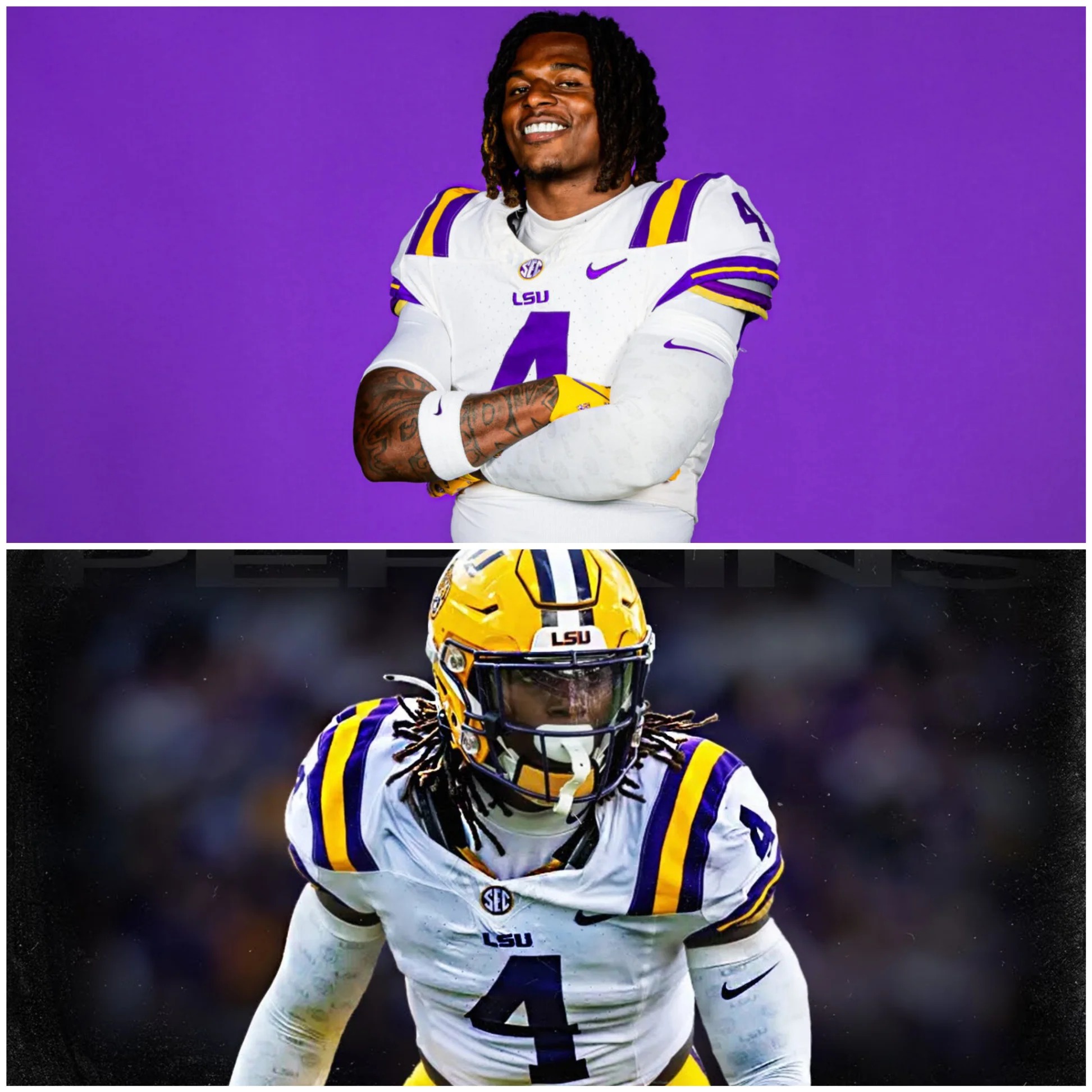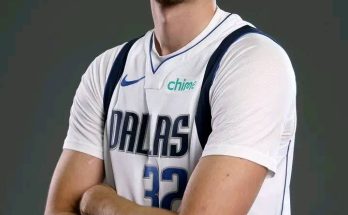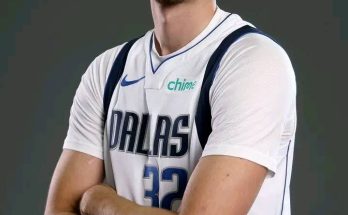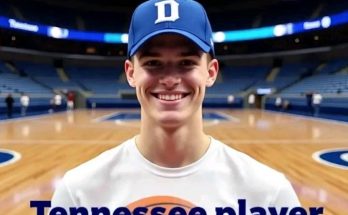Harold Perkins Jr., one of the most exciting and promising players in college football, made headlines recently by turning down a massive NIL (Name, Image, and Likeness) deal worth \$7.7 million from the University of Tennessee. This unexpected decision has left fans, analysts, and sports pundits alike stunned, with many questioning the rationale behind Perkins’ choice and what it means for the future of college sports.
For those who may not be familiar with Harold Perkins Jr., he is a linebacker who has quickly become one of the most sought-after talents in college football. His remarkable skills on the field have earned him recognition as one of the top defensive players in the country. With a combination of speed, strength, and football IQ, Perkins’ potential seemed limitless. He was a game-changer for LSU, and his performance as a freshman made him one of the hottest prospects heading into the next season. His decision to reject such a lucrative offer has left many questioning whether the current landscape of college football is shifting in ways that no one fully anticipated.
The world of college sports has undergone significant changes in recent years, largely due to the introduction of NIL deals. These agreements allow athletes to profit from their name, image, and likeness, opening up new revenue streams for players who previously had limited opportunities to capitalize on their fame. While NIL deals were once a foreign concept in the NCAA, they have now become an integral part of the recruiting process. The deals vary in size and scope, with some players securing significant sums of money even before stepping onto the field for their first game. It’s no secret that major universities have used these deals to attract top talent, and in the case of Harold Perkins Jr., Tennessee was reportedly offering him one of the largest deals in recent history.
The \$7.7 million NIL offer from Tennessee was reportedly one of the largest and most competitive offers that any player in the country had received. The deal, which would have secured Perkins’ financial future for years to come, was a clear signal that the University of Tennessee was willing to do whatever it took to secure his commitment. Many experts speculated that the offer would be too tempting for a young player like Perkins to turn down. After all, the pressure to provide for family, build wealth, and secure a financial future is significant, especially for young athletes who may not come from affluent backgrounds. But Perkins’ decision to decline the offer has raised questions about the motivations behind his choice.
In a sport where players are often expected to prioritize financial gain and personal success, Perkins’ decision to reject such a massive deal speaks volumes about his character and values. The move has sparked a conversation about the role of money in college sports and whether it is possible for athletes to balance their financial interests with their passion for the game. Many players, especially those at the top of their respective sports, face a difficult choice between making money through NIL deals and staying true to the sport that brought them fame in the first place.
What makes Perkins’ decision even more intriguing is the timing. As college football has become increasingly commercialized, the stakes are higher than ever. Major schools are willing to throw large sums of money at players, hoping to secure their commitment and build championship-contending teams. Perkins, however, appears to be taking a different approach. Rather than chasing the money, he seems to be prioritizing other aspects of his life and career, including his desire to succeed on the field and his commitment to his education. It’s clear that Perkins is not solely motivated by financial gain, which is a refreshing change from the typical narrative surrounding athletes in the modern era.
So, what exactly led Perkins to turn down the lucrative offer from Tennessee? While it’s difficult to say with certainty, there are a few possible explanations. First and foremost, Perkins may have genuine loyalty to LSU, the school that took a chance on him and helped him develop into the player he is today. After all, LSU has become one of the premier football programs in the country, and Perkins may feel a deep sense of commitment to the university and its coaching staff. This type of loyalty is rare in today’s era of high-powered NIL deals and mass transfers, but it’s possible that Perkins views his relationship with LSU as something that transcends monetary value.
Additionally, Perkins may have a long-term vision for his career that goes beyond short-term financial gain. While \$7.7 million is an impressive sum, Perkins may be thinking about his future in the NFL, where the financial rewards for a successful career can be even more substantial. By staying at LSU and continuing to develop his skills, Perkins could position himself for a higher draft pick and a more lucrative contract in the NFL, which would ultimately outweigh the immediate financial benefits of the NIL deal.
Another potential factor in Perkins’ decision could be the advice he is receiving from those close to him. College athletes often rely on their families, mentors, and coaches to help them navigate the complexities of their careers. Perkins may have consulted with people who have his best interests at heart, and they may have advised him to turn down the NIL offer in favor of focusing on his development as a player. It’s also possible that Perkins has a strong support system that is helping him stay grounded and focused on what truly matters in his life.
Perkins’ decision also raises questions about the broader implications of NIL deals on college athletics. While many players have embraced the opportunity to profit from their image and likeness, there are others who may be less inclined to prioritize money over their passion for the sport. Perkins’ choice serves as a reminder that college athletes are more than just commodities for universities and sponsors. They are individuals with personal goals, values, and aspirations that may not always align with the financial incentives being offered to them.
It’s also worth considering the impact that Perkins’ decision could have on other athletes. His choice to turn down such a large offer could inspire other young players to think more carefully about the role that money plays in their decision-making process. In a world where NIL deals are becoming increasingly influential in recruiting, Perkins’ stance could serve as a counterpoint to the prevailing narrative that money should be the primary motivator for athletes. As the landscape of college sports continues to evolve, Perkins’ decision could spark a broader discussion about the balance between financial opportunity and personal growth in the lives of college athletes.
For LSU, the news of Perkins turning down such a massive offer is undoubtedly a relief. The Tigers have invested significant time and resources into developing Perkins into one of the best defensive players in the country, and the prospect of losing him to another program would have been a significant blow. With Perkins remaining committed to LSU, the team can continue to build around him as one of its star players, and his decision sends a message that LSU is a place where talent is nurtured and valued.
In the end, Harold Perkins Jr.’s decision to reject a \$7.7 million NIL deal from Tennessee is a powerful reminder that athletes are not simply driven by money. Their decisions are influenced by a range of factors, including loyalty, personal values, and long-term goals. As the world of college sports continues to evolve, Perkins’ choice offers a glimpse into a future where athletes may prioritize their love of the game and personal growth over the financial rewards that come with NIL deals. It’s a decision that challenges the status quo and shows that, even in the modern era of college athletics, passion and commitment can still hold more value than a massive paycheck.



